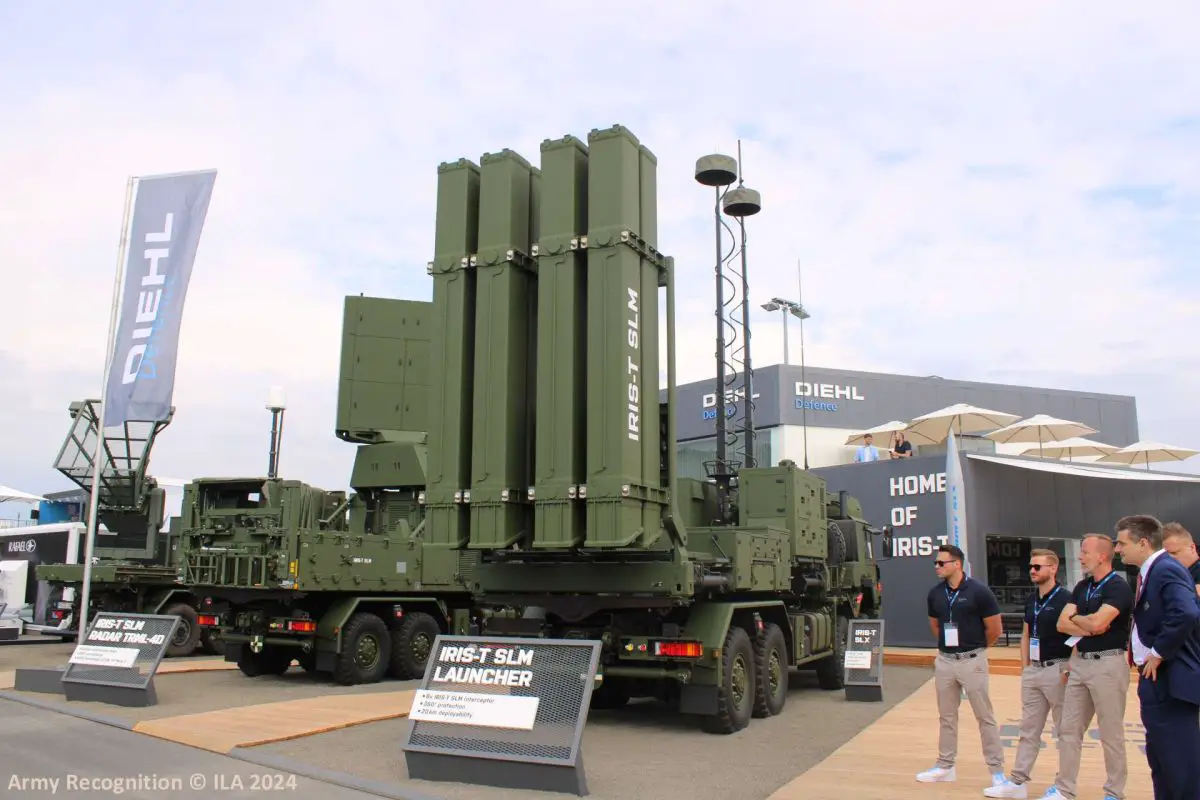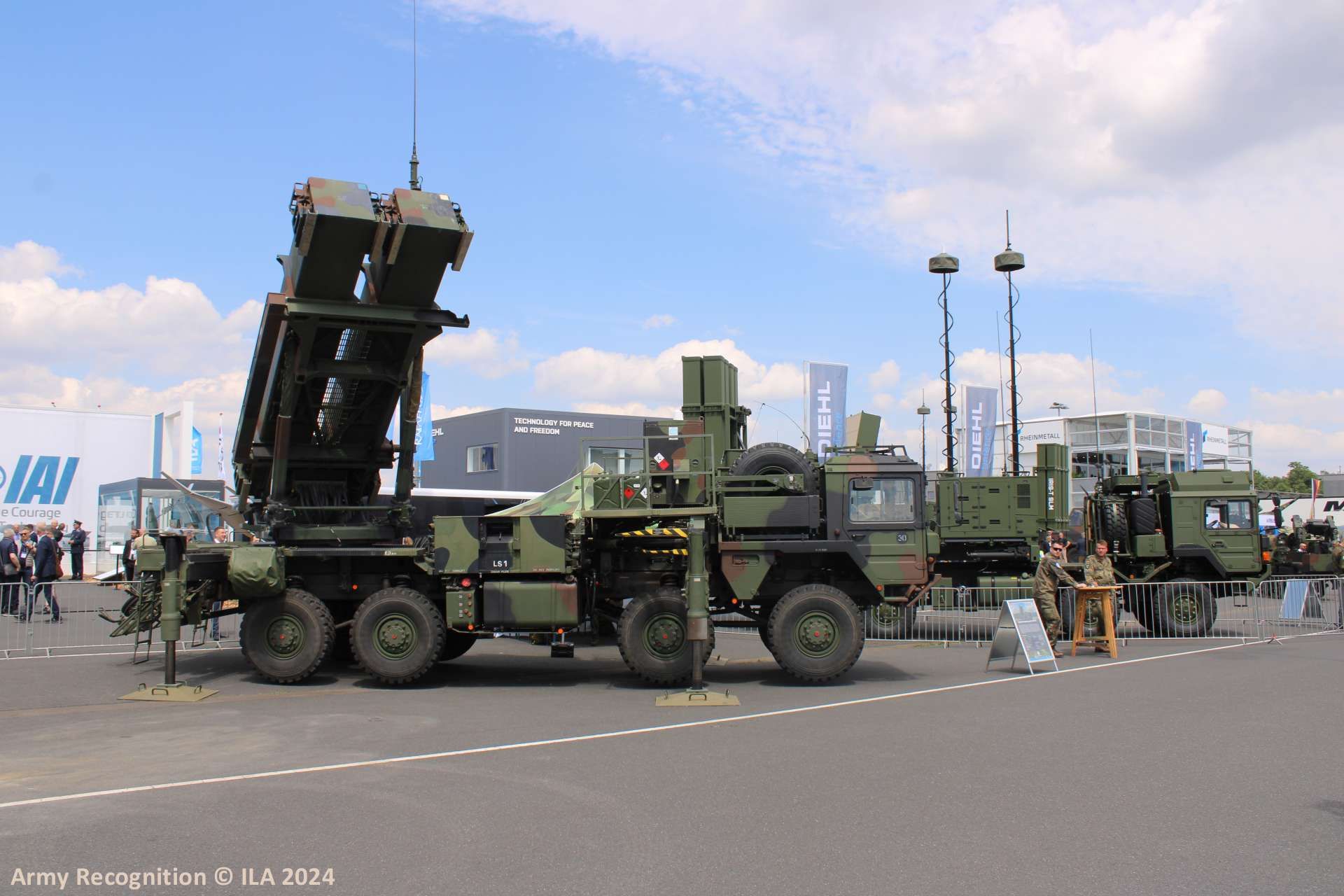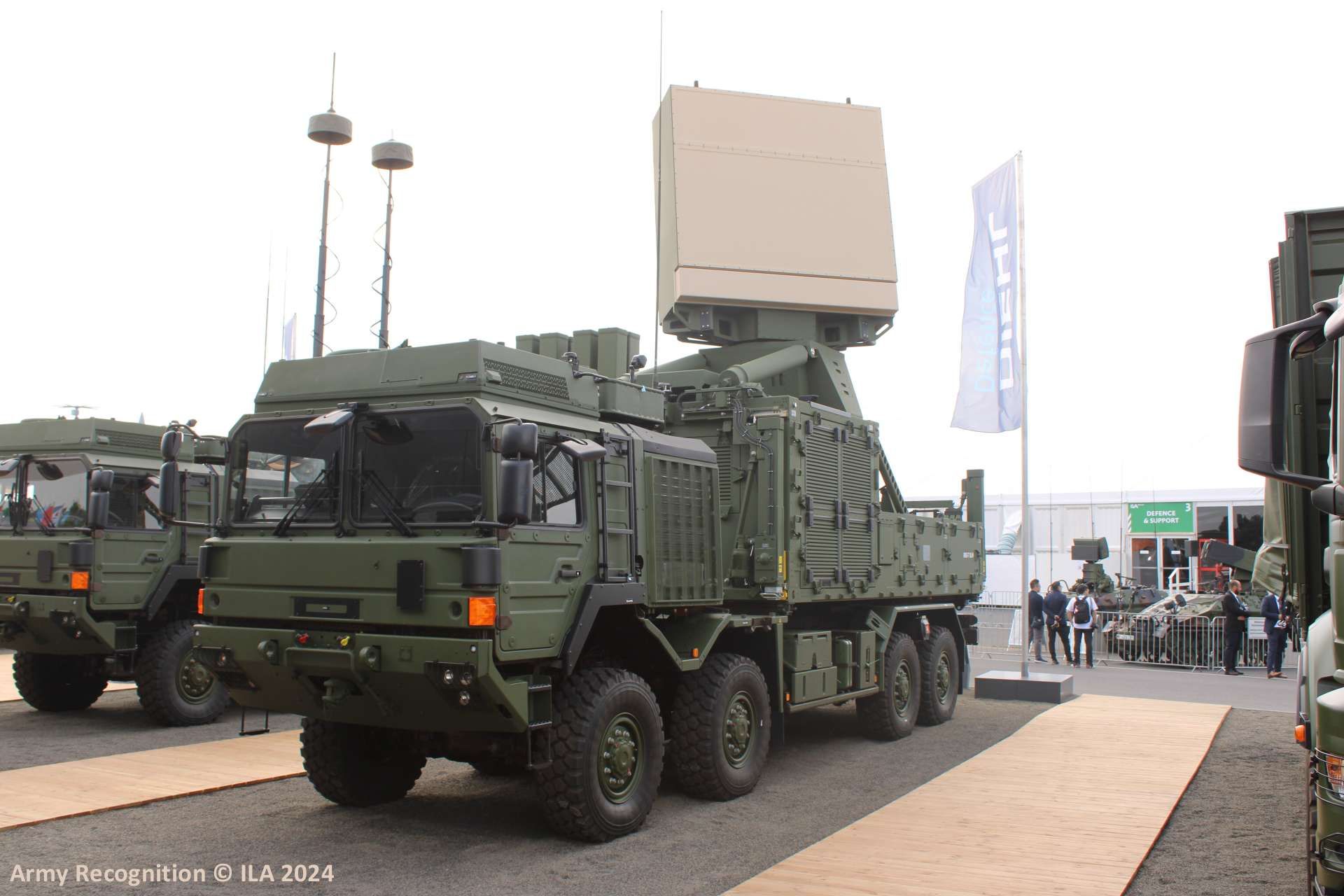Breaking News
Diehl Defence delivers first IRIS-T SLM air defense system to German Army.
On August 6, 2024, the Bundeswehr Procurement Office (BAAINBw) accepted the first fire unit of the IRIS-T SLM air defense system from the manufacturer Diehl Defence as planned. This procurement was completed in an unusually short timeframe for a project of this magnitude. Approximately a year prior, the Budget Committee of the German Bundestag approved the acquisition of six IRIS-T SLM fire units, funded by the Bundeswehr's special fund, with around 950 million euros allocated for these systems.
Follow Army Recognition on Google News at this link

On June 6, 2023, the German Federal Office of Bundeswehr Equipment, Information Technology and In-Service Support (BAAINBw) signed a contract with Diehl Defence for the procurement of six IRIS-T SLM air defense systems, for a value of around €950 million. (Picture source: Army Recognition)
On June 6, 2023, the German Federal Office of Bundeswehr Equipment, Information Technology and In-Service Support (BAAINBw), responsible for the procurement of military equipment for the German Army, signed a contract with Diehl Defence for the procurement of six IRIS-T SLM air defense systems, for a value of around €950 million, with deliveries expected to begin in 2025 and completion by 2027. Following the acceptance by the procurement office, these units will undergo qualification and operational testing, aiming to make the system available to the Luftwaffe by the end of 2025.
Germany, which is paradoxically a new user of the IRIS-T SLM air defense system, plans to integrate the system into its air defense network by the end of 2025. As the manufacturer adapted the system to various NATO interfaces, the German units will join the European Sky Shield Initiative, alongside other air defense systems like the MIM-104 Patriot and Arrow 3, to form a comprehensive European missile defense shield.
Current international customers of the IRIS-T SLM air defense system include Ukraine, Egypt, Bulgaria, Estonia, Latvia, Lithuania, Austria, and Slovenia. Initially, the German Army (the Bundeswehr) planned to purchase eight systems, but this number was revised to six. Designed to counter aerial threats such as drones, airplanes, helicopters, and cruise missiles, each battery of the IRIS-T SLM comprises a medium-range radar with a detection range of up to 250 km and three launchers, each with eight guided missiles that have a range of 40 km. These components are controlled remotely from a single command post, allowing for operation with minimal personnel.

As Diehl Defence adapted the system to various NATO interfaces, the German units will join the European Sky Shield Initiative, alongside other air defense systems like the MIM-104 Patriot and Arrow 3, to form a comprehensive European missile defense shield. (Picture source: Army Recognition)
The system has demonstrated its capabilities under real combat conditions in Ukraine, where it has been deployed to protect against air attacks on civilian and infrastructure targets. The IRIS-T SLM's deployment to Ukraine began in October 2022, and, according to the Ukrainian Ministry of Defense, this system achieved a success rate of around 90%, justifying subsequent deliveries in 2023 and 2024.
The development of the IRIS-T SLM began in 2007 as a multinational project led by Diehl Defence, involving partners from Norway, Sweden, Greece, and Italy. The first unguided test flight took place in October 2009, followed by successful tests of the complete prototype from May 2012. By 2022, the system was ready for deployment. In 2023, Diehl Defence and the Bundeswehr established a training center in Todendorf, Schleswig-Holstein, where other nations can train their personnel on the IRIS-T air defense system.
Technically, the IRIS-T SLM is an all-weather, tactical air defense missile system designed to counter helicopters, aircraft, unmanned aerial vehicles, cruise missiles, and short-range ballistic missiles. Its main components include a Tactical Operations Center (TOC), radar, and multiple launchers. All components are mounted on 20-foot ISO container frames, enabling transportation by various means, including trucks, ships, railways, and aircraft such as the C-130 and A400M.
The TOC is the central command post, where operators conduct fire control operations, receiving instructions from higher command centers. The radar, the primary sensor of the fire unit, is used for airspace surveillance, target acquisition, and tracking. The current configuration includes the TRML-4D multifunction radar from Hensoldt, equipped with an Active Electronically Scanned Array (AESA) antenna. This radar can detect and track various types of aerial targets, including small, fast, and low-flying objects, with a range of 250 km and a maximum operational altitude of 30 km.
The launchers, unmanned and equipped with eight IRIS-T SLM missiles each, are deployed and operational within ten minutes. The missiles, an adapted version of the IRIS-T air-to-air missile, feature an improved guidance system, GPS, and a two-way data link. The system’s modular design allows for a swift reloading process, taking about 15 minutes.

The current configuration includes the TRML-4D multifunction radar from Hensoldt, which can detect and track various types of aerial targets, including small, fast, and low-flying objects, with a range of 250 km and a maximum operational altitude of 30 km. (Picture source: Army Recognition)


























